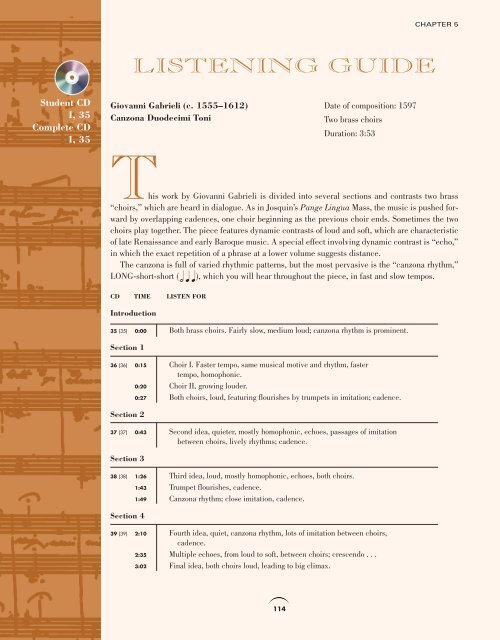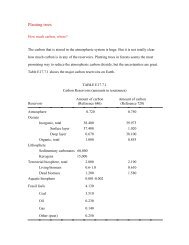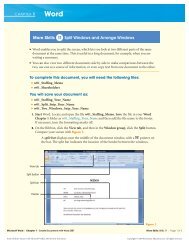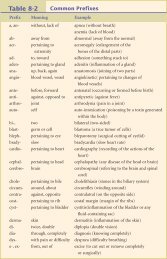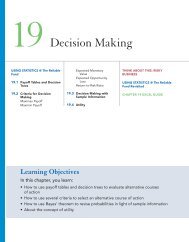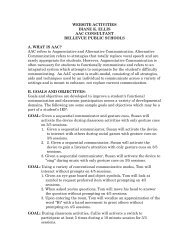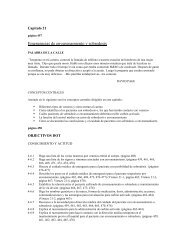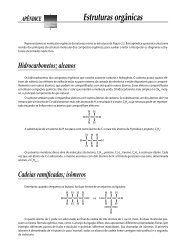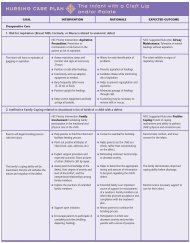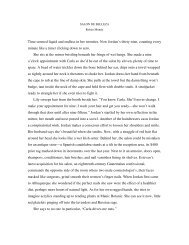LISTENING GUIDE
LISTENING GUIDE
LISTENING GUIDE
You also want an ePaper? Increase the reach of your titles
YUMPU automatically turns print PDFs into web optimized ePapers that Google loves.
YUDKMC05_096-118hr 11-01-2007 14:36 Page 114<br />
Student CD<br />
I, 35<br />
Complete CD<br />
I, 35<br />
<strong>LISTENING</strong> <strong>GUIDE</strong><br />
Giovanni Gabrieli (c. 1555–1612)<br />
Canzona Duodecimi Toni<br />
114<br />
Date of composition: 1597<br />
Two brass choirs<br />
Duration: 3:53<br />
CHAPTER 5<br />
This work by Giovanni Gabrieli is divided into several sections and contrasts two brass<br />
“choirs,” which are heard in dialogue. As in Josquin’s Pange Lingua Mass, the music is pushed forward<br />
by overlapping cadences, one choir beginning as the previous choir ends. Sometimes the two<br />
choirs play together. The piece features dynamic contrasts of loud and soft, which are characteristic<br />
of late Renaissance and early Baroque music. A special effect involving dynamic contrast is “echo,”<br />
in which the exact repetition of a phrase at a lower volume suggests distance.<br />
The canzona is full of varied rhythmic patterns, but the most pervasive is the “canzona rhythm,”<br />
LONG-short-short (hqq), which you will hear throughout the piece, in fast and slow tempos.<br />
CD TIME LISTEN FOR<br />
Introduction<br />
35 (35) 0:00 Both brass choirs. Fairly slow, medium loud; canzona rhythm is prominent.<br />
Section 1<br />
36 (36) 0:15 Choir I. Faster tempo, same musical motive and rhythm, faster<br />
tempo, homophonic.<br />
0:20 Choir II, growing louder.<br />
Section 2<br />
0:27 Both choirs, loud, featuring flourishes by trumpets in imitation; cadence.<br />
37 (37) 0:43 Second idea, quieter, mostly homophonic, echoes, passages of imitation<br />
between choirs, lively rhythms; cadence.<br />
Section 3<br />
38 (38) 1:26 Third idea, loud, mostly homophonic, echoes, both choirs.<br />
1:43 Trumpet flourishes, cadence.<br />
1:49 Canzona rhythm; close imitation, cadence.<br />
Section 4<br />
39 (39) 2:10 Fourth idea, quiet, canzona rhythm, lots of imitation between choirs,<br />
cadence.<br />
2:35 Multiple echoes, from loud to soft, between choirs; crescendo . . .<br />
3:02 Final idea, both choirs loud, leading to big climax.


